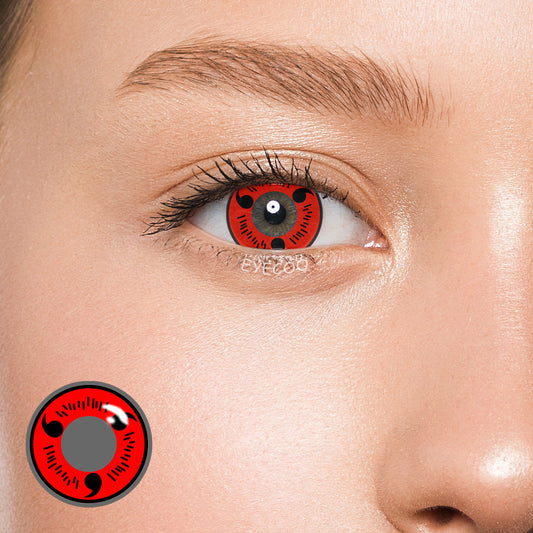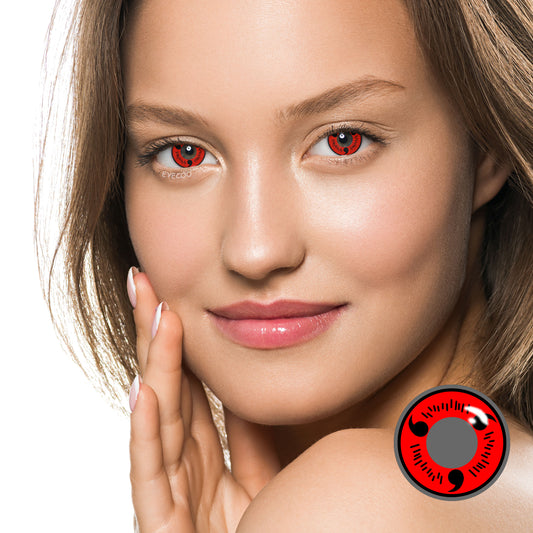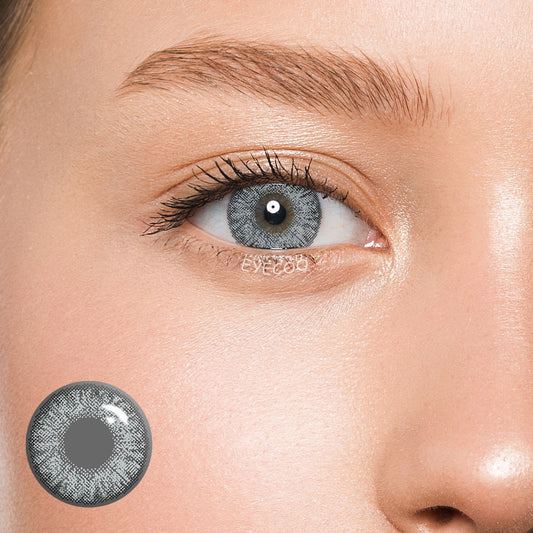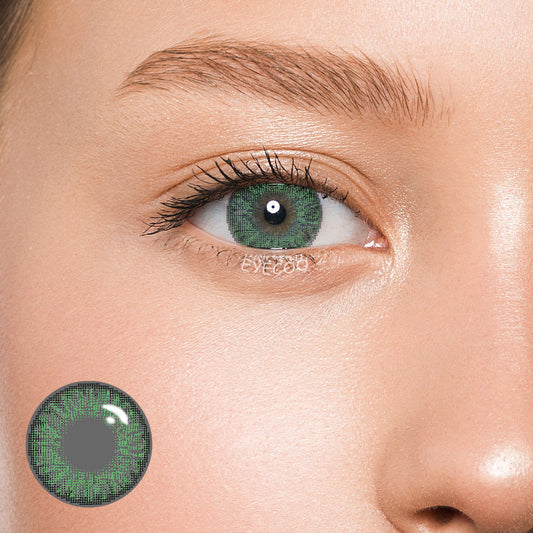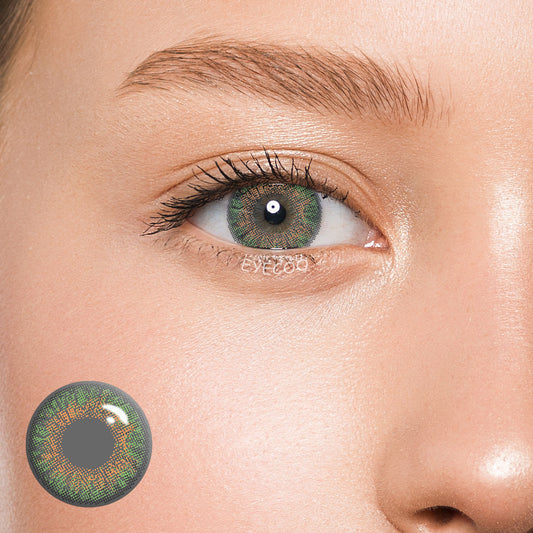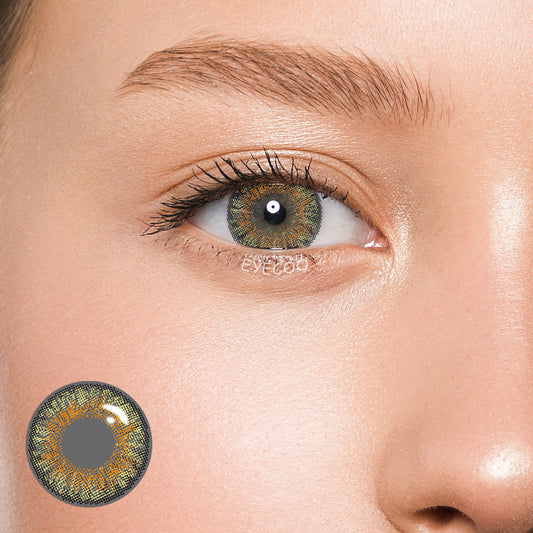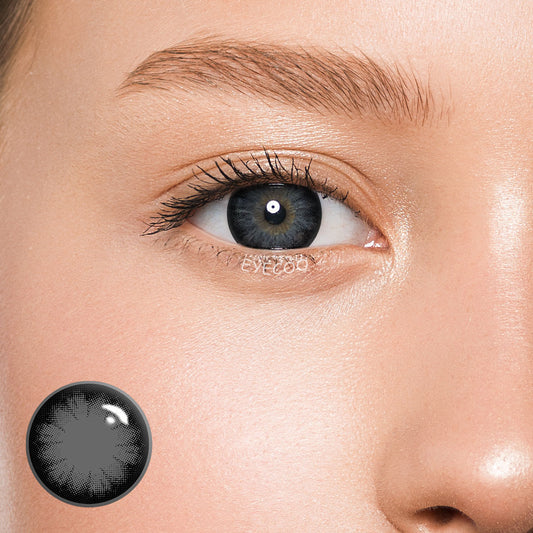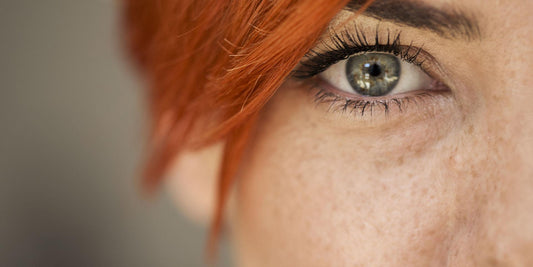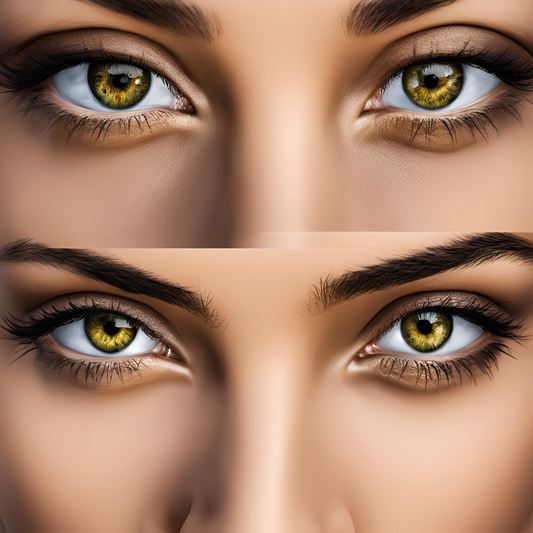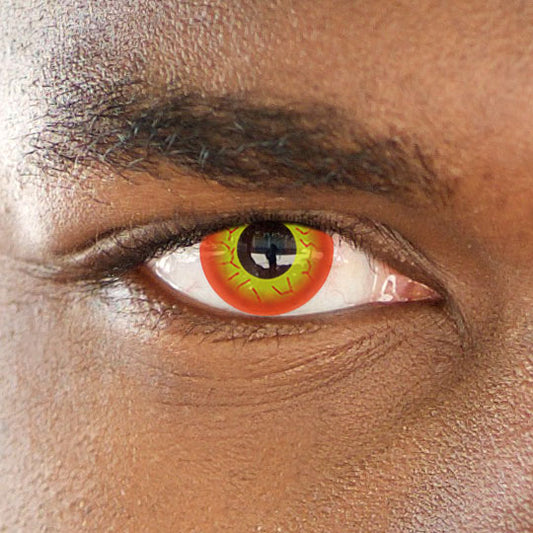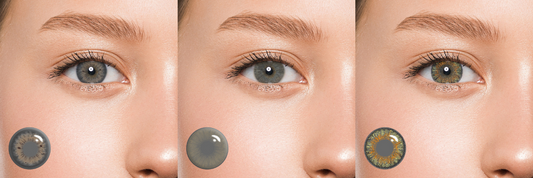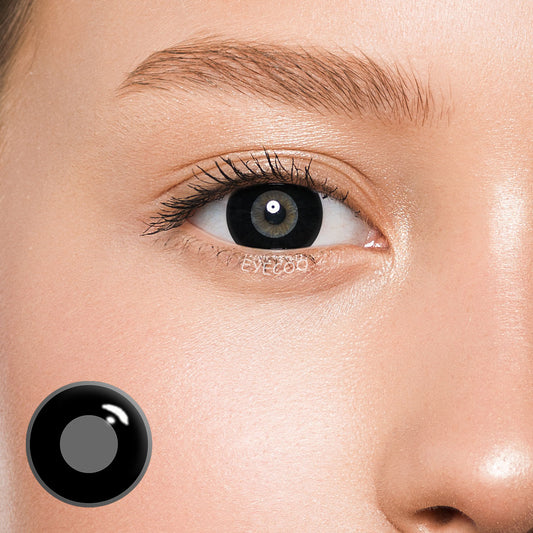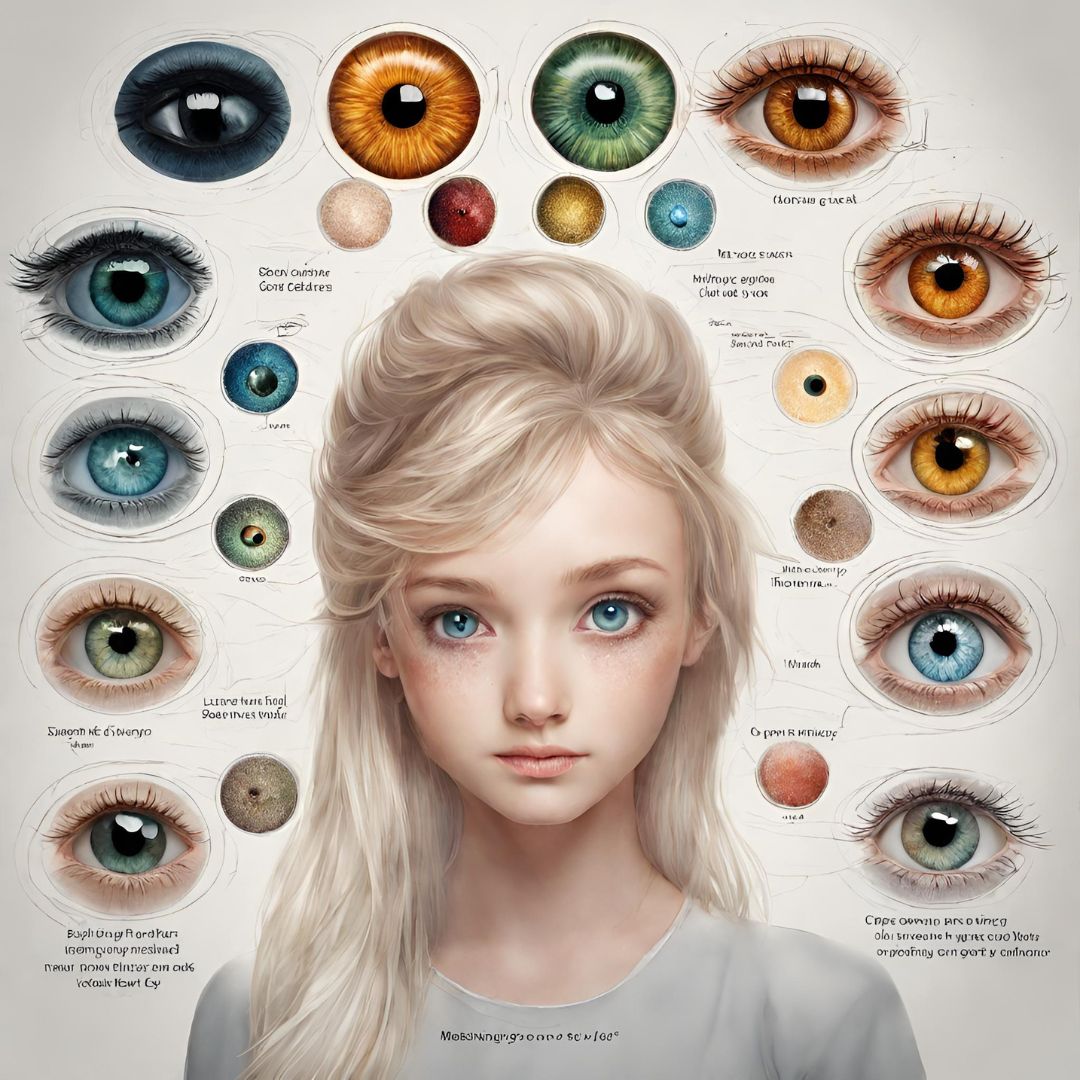
Meaning of Eye Color
What is eye color?
The amount of melanin produced by the body determines an individual's eye color. Their skin, hair, and eyes are pigmented by a substance called melanin. Eye color is mainly determined by the genes responsible for eye color. The iris or the colored part of the eye comes in various shades, ranging from very light brown to light blue or gray. No two people have the exact same eye color. The colored part of the eye surrounding the pupil is scientifically referred to as the iris. The color of a person's iris is known as the eye color, and the small dark circle in the center is the pupil. The iris is composed of two layers. The amount of pigment (melanin) in the top layer determines eye color (matrix). The back layer of the iris contains brown pigment in almost everyone's eyes, including those with blue or green eyes. Eye color is akin to fingerprints. There are no two identical sets of eyes in the world because the iris contains a certain amount of melanin, which is unique to each individual.
Genetics of Eye Color - Eye Color Dominance
Several studies indicate that there are three main eye colors: dark brown, green, and blue. In recent years, the increasing use of more colors has been criticized for being too simplistic. The most common eye color worldwide is brown; blue and gray are the next most popular; green eyes are the rarest. As mentioned earlier, the amount of melanin (a pigment found in the iris) is the primary determinant of eye color. Darker eyes have more melanin in the iris, and vice versa. Blue eyes are the result of low levels of melanin or a lack of melanin. The amount of melanin present throughout the body controls the tones of the skin, eyes, and hair.
A child's eye color may be entirely different from that of their parents. However, if both parents have brown eyes, the child is likely to have brown eyes too. It was once believed that one gene controlled eye color and inheritance was straightforward, with brown eyes being dominant over blue eyes. This theory suggested that parents with blue eyes could not have a child with brown eyes.
Recent research has shown how oversimplified this concept was. Given that many genes contribute to eye color, the genetics of eye color is a more complex process. While the eye color of parents and other relatives may often predict the eye color of a child, genetic variations can occasionally lead to unexpected outcomes. Numerous studies have found that the HERC2 and OCA2 genes primarily determine eye color. However, at least ten other genes also influence eye color. Eye color is influenced by complex genetic interactions. This means that two people with blue eyes can have a child with brown eyes.
A genetic calculator, based on a simple model considering two eye color genes, can explain how eye color is inherited (brown, blue, and green). In reality, the genetics of eye color are much more nuanced. This suggests that while not everyone may use an eye color calculator, many people can. The genetic calculator takes into account not only parents but also both sets of grandparents for more accurate predictions. According to this concept, brown dominates over green and blue, green dominates over blue, and blue is ultimately recessive, meaning dominant genes suppress it.
Eye Color Determination
The amount of melanin produced by a person's body affects the color of their eyes. Melanin is a naturally occurring pigment that imparts color to the skin, hair, and eyes. Melanin is produced by melanocytes, which are cells in the skin. Each person's melanocytes produce pigment at different levels. People with lighter eyes have fewer melanocytes producing melanin in their skin cells. The eyes of people with more melanocytes producing melanin in their skin cells tend to have darker colors. According to scientists, one gene is responsible for eye color. They believed that a person's level of melanin was determined by a straightforward inheritance pattern. For example, they thought that parents with blue eyes would not be able to conceive a child with brown eyes. Scientists today recognize that the inheritance pattern is more complex. Eye color is influenced by multiple genes. A person's eye color is influenced by the eye color of their parents and other family members. Sometimes, due to genetic variations, a person's eyes may differ in color from those of their family members.
Types and Meanings of Eye Colors
Here is a list of eye colors, including common and rare existing eye colors:
- Brown Eyes: The most common eye color is brown. People with brown eyes have more melanin, with over 50% of the world's population having brown eyes.
- Green Eyes: Green-eyed individuals are considered to have an optimistic outlook on life, enthusiasm for interpersonal relationships, and a natural curiosity about the natural world, as green eyes are rare.
- Blue Eyes: People with blue eyes actually lack blue pigment in their skin. The appearance of blue in the iris is due to the reflection of light in a way that brightens the eye color. The less melanin in the eyes, the less light is absorbed. As blue eyes are rare, studies indicate that only 8% of the world's population has blue eyes.
- Hazel Eyes: Hazel eyes, familiar to about 5% of people, are quite common, especially in Europe and the United States. Hazel eyes have spots of gold, green, and brown in the center, overall appearing light or yellowish-brown.
- Amber Eyes: This unique eye color exists in only about 5% of the world's population. Amber eyes lack any gold, green, or brown spots and appear gold or copper-colored, distinct from light brown eyes.
- Black Eyes: While some individuals may appear to have black irises, their eyes are actually very deep brown, nearly as black as the pupil.
- Gray/Silver Eyes: Gray eyes are rare, with less than 1% of people having them. Most gray-eyed individuals reside in Northern and Eastern Europe. Researchers claim that gray eyes have less melanin than blue eyes.
- Yellow Eyes: Eyes and skin that turn yellow are almost always a sign of a medical condition requiring treatment. Anyone with yellow eyes should immediately consult a doctor or seek emergency care to avoid potential deadly complications such as organ damage.
- Red Eyes: Individuals with albinism have little or no melanin in their skin, hair, and irises. They typically have light blue eyes. Rarely, blood vessels can be seen, making their eyes appear pink or deep red, and their irises are quite pronounced.
Eye Color Percentages
After determining their eye color palette, many people wonder how rare their eye color is. According to rarity charts and various studies, the approximate percentages of each eye color are as follows:
- 45% - Brown Eyes
- 27% - Blue Eyes
- 18% - Hazel Eyes
- 9% - Green Eyes
- 1% - Gray Eyes and Other Eye Colors
Which Eye Color is Most Common?
The fact that brown eyes are the most common eye color in the world is not surprising. Between 55% to 79% of people on Earth have brown eyes. However, brown comes in various shades, from light brown to dark chocolate. Interestingly, the highest prevalence of dark brown eyes is found in Southeast Asia, East Asia, and Africa. Lighter brown tones are more commonly found in West Asia, Europe, and the Americas.
Which Eye Color is the Rarest?
While green is considered the rarest among the most common eye colors, gray and other eye colors resulting from genetic mutations or medical conditions are even rarer.
What color are my eyes?
To determine a person's exact eye color palette, an eye color test can be used. Due to the unique patterns and involvement of multiple colors in the eyes, artists find it extremely challenging to accurately depict the colors of the eyes.
Can eye color change? How does eye color change?
In a person's lifetime, their eye color typically remains unchanged. Changes in eye color may be caused by certain diseases and conditions. Occasionally, a person's eye color may seem to vary slightly. For example, if they wear a blue shirt, their eyes may appear to be a deeper blue. Even with color-correcting lenses, the appearance of eye color can be influenced by changes in the colors of the environment as light reflects off objects. Some individuals have a darker ring around their iris. Over time, this may diminish and lose some prominence.
- Can eye color change with emotions?
- Can eye color change with age?
- Colored contact lenses / Cosmetic contact lenses.
- Eye color-changing drops
- Eye color-changing surgery
The development of iris implant surgery resulted from early medical issues and traumatic eye injuries. These include aniridia, where there is complete absence of the iris, and nevus, where there is partial absence of the iris. In this treatment process, a small corneal incision is made, and then an artificial iris made of silicone, which has been folded to fit through the slit, is inserted. The artificial iris is then unfolded behind the cornea, covering the actual iris. Local anesthetics are typically used. While there are medical applications, iris implant surgery is increasingly popular for cosmetic reasons. Although the natural iris of the eye is typically effective, many people choose to undergo surgery to change their eye color. According to research, patients undergoing cosmetic iris implant surgery are more prone to problems, including vision loss or blindness, cataracts (where the transparent lens becomes cloudy), corneal damage and swelling, and uveitis (eye inflammation leading to redness and pain, as well as blurred vision). Controversial new technologies for cosmetic eye color surgery have not been thoroughly studied by medical researchers. There is almost no evidence to suggest that the procedure is reliable and safe. The procedure has not undergone clinical trials or scrutiny by US regulatory agencies, which is why residents of the United States must travel abroad for this surgery. Typically, the cost of eye color-changing surgery ranges from $5,000 to $7,000. Surgeons disperse the prosthetic iris over the native iris. Each eye typically takes about five to ten minutes. Patients often express satisfaction with the changed eye color for cosmetic reasons post-surgery.
What is the usual eye color of a baby at birth? Eye color of newborns
Blue or brown eyes are common in newborns. However, any eye color is possible for a baby. As infants grow, melanin continues to develop. If a newborn with blue eyes produces more melanin in the iris, their eyes may darken or turn brown or hazel. The first year of a baby's life is typically when this transition occurs. However, it may take several years for the eyes to develop the tone that will accompany them throughout their lives. To calculate the probability of a baby's eye color, parents can easily find eye color charts using their own eye colors as genetic material, but the results may not be accurate.
People with different eye colors
When there is a condition medically known as heterochromia, the color of the iris varies. Individuals with this condition may have one eye that includes several shades (for example, the iris may be half one color and half another, or each of their eyes is a different color). Heterochromia typically originates from benign genetic variations. As it naturally occurs infrequently, there are no accompanying symptoms or health issues. Rarely, diseases or injuries such as eye tumors can lead to heterochromia, but this condition may also be caused by a condition called Horner's syndrome.
Diseases that affect eye color:
- Albinism Oculocutaneous albinism (OCA) is a group of genetic disorders where the pigment melanin is almost absent, commonly referred to as albinism. Since melanin also plays a role in the growth of the optic nerve, individuals with albinism often experience vision problems. In albinism, eyebrows and eyelashes are typically pale. Age-related changes in eye color are possible, ranging from extremely light blue to brown. Due to the lack of pigment, the iris is relatively translucent. This indicates that light cannot be completely blocked by the iris from entering the eye. Therefore, in certain cases, particularly light-colored eyes may appear red.
- Cataracts: With this condition, the lens inside the eye becomes cloudy. Due to cataracts, the eyes may appear milky white or gray.
- Arcus senilis: This condition is common in older adults and causes a shallow gray or blue ring to form around the cornea (the transparent layer extending over the iris). The ring is made up of lipids (fatty substances). Elevated cholesterol levels may be indicated by arcus senilis. When it affects individuals under 40, healthcare professionals refer to this condition as arcus juvenilis.
- Pigment dispersion syndrome: With this condition, iris pigment becomes loose and floats into other areas of the eye. In areas with less pigment, the iris appears lighter.
- Waardenburg syndrome: Waardenburg syndrome is a rare genetic disorder characterized by loss of pigmentation in the eyes, skin, and hair.
Conclusion
The iris is defined as the colored area of the human eye. Melanin, a brown pigment, imparts color to the eyes and skin. Different concentrations of pigments result in different eye hues. Brown eyes are currently the most common eye color worldwide, but many other eye colors are possible, including hazel, amber, blue, green, and gray.
It is well-known that many people desire to change their eye color, and they can achieve this through wearing colored contact lenses. However, it must be acknowledged that there are health risks and potential consequences associated with wearing them. Additionally, another method to change eye color is through a medical procedure called iris implant surgery, initially designed to treat certain medical conditions and diseases.

